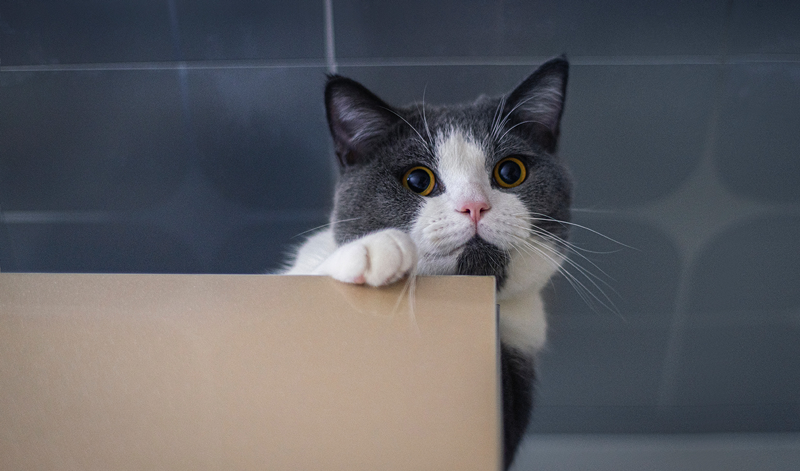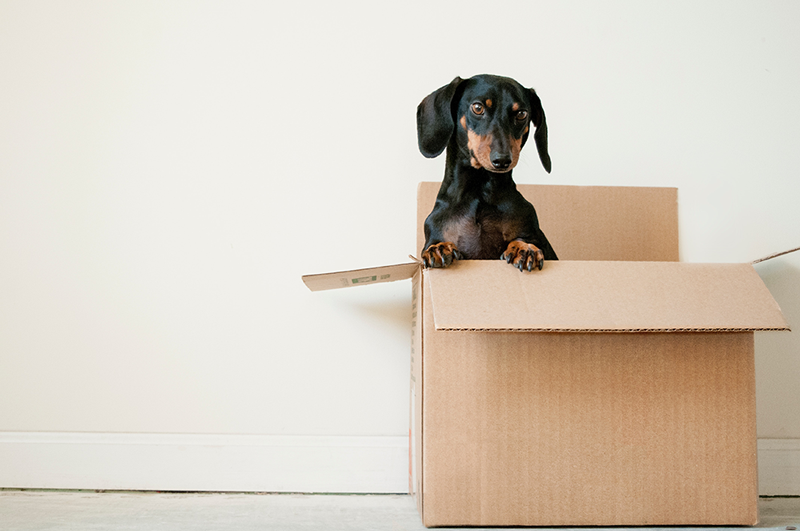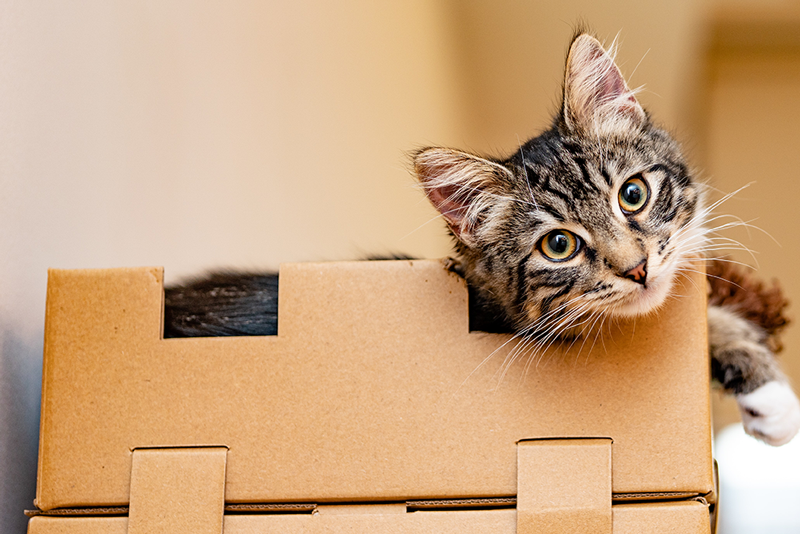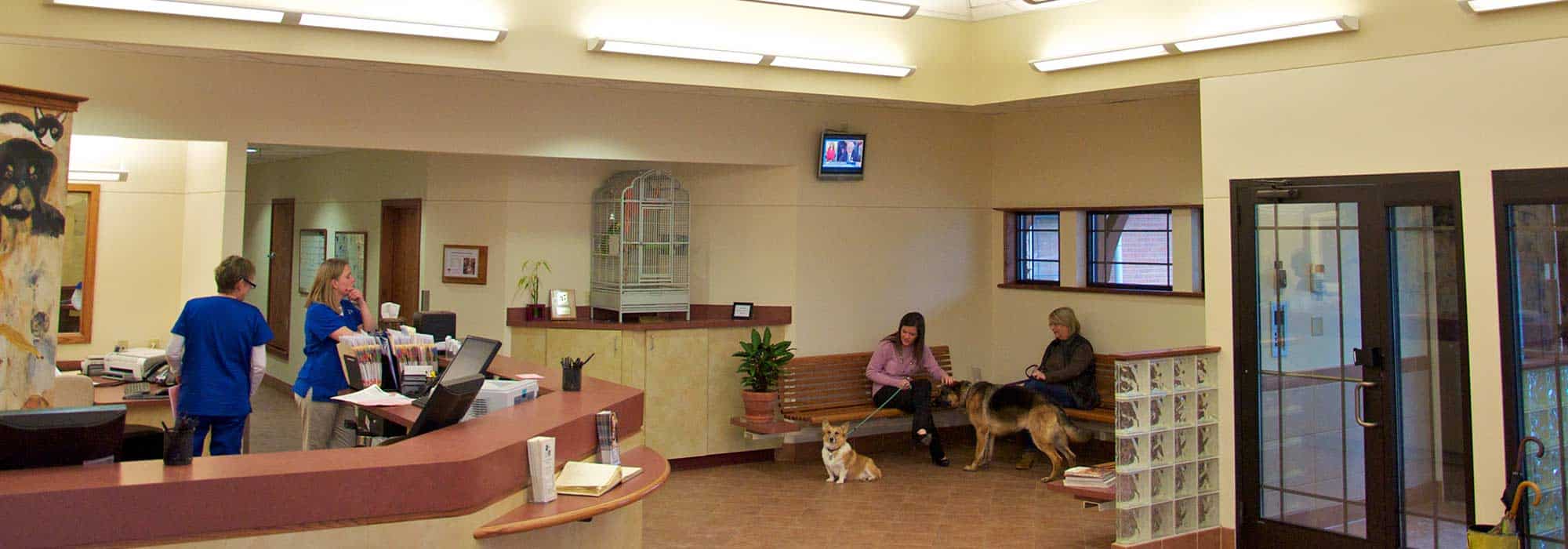Make Moving Less Stress for Your Pet

How to Help Your Dog or Cat with a Big Move
Moving can be so hard. And moving with your pet may sound especially challenging. Animals get comfortable in their “home base,” and wouldn’t choose to move. It’s easy for pets to become stressed, anxious or fearful about leaving a place they’ve grown to love.
But it moving doesn’t have to be a bad experience. Following these tips can make moving less stress for your pet (although we have no idea how to make it less stressful for humans!).
First Things First
Moving is time-consuming and can take up all of your attention. But to reduce your pet’s stress, don’t make them feel like you’ve forgotten about them. Give your pet lots of the affection they appreciate. Belly rubs, scratches behind the ear, singing or cuddles– whatever you know helps them to relax and feel safe. Throughout the process, spend as much time with your pet as you can.

Packing Up and Getting Ready to Move
Before you plan on packing up, bring a few boxes into your existing home, to get your pet used to them. If possible, make the packing process gradual and un-rushed. For instance, pack five boxes a day for five days. A flurry of activity will excite or agitate your pet, especially when it’s happening in the safe spaces of their home.
Also, pack up your pet’s belongings last, right before you make the move. Your cat or dog doesn’t know their stuff is just in a box waiting to be moved– it appears to be taken from them forever.
Moving Day with Your Pet
Moving day can be chaotic. Keeping your pet safe can prevent it from becoming tragic.
Keep all pets crated or leashed during the process of moving out of your old and into your new home. Whether the pets are at the old or new property, open doors invite escape and the risk of your pet becoming lost or hurt.
Especially remember that cats like to hide when alarmed. Keeping your cat in its carrier will make sure you know where your cat is at all times.
If your pet is really, truly nervous and can’t be calmed during the moving process, someone familiar needs to stay with them.

At Your New Home with Your Cat
To introduce your cat to your new home, start small. As mentioned, cats have a tendency to hide. You don’t want to lose your cat in your new home on the first day. That will be stressful for both of you.
Place your cat in their carrier with a familiar towel or blanket draped over it. Bring them into the new house and into one smaller, closed room with you, preferably one that you plan to have their things in. Have some treats or favorite toys to offer.
Spend some time together, and let your cat get used to the room and comfortable in the space. Provide a litter box, food bowl and water dish. Keep them in this room for 24-48 hours, visiting often. After that, your cat should be fine with having free access to the entire house.
At Your New Home with Your Dog
Introducing a dog to your new home is a little different. Before bringing your dog inside, set up their areas of the house, like food and water bowls, bed, crate, toy bin, etc. Leash your dog and walk them through the house, letting them explore. Get down on your dog’s level and give them plenty of affection and assurance that you are both there together.
Your dog will probably be quite excited by this point. So, before unleashing them in the house, take a potty break outside. (Or you might find an unwelcome surprise puddle or pile when you least expect it).
After introductions are made, resume your dog’s regular routine, and they should be just fine.
Watch the Video: Make Moving Less Stress for Your Pet
Check out this video about reducing the stress of moving for your cat or dog.

